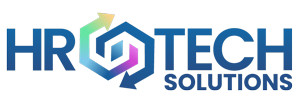How to Manage Your Data During A New Benefits Administration Software Implementation
Migrating to a new benefits administration technology solution can be an overwhelming undertaking. Whether it’s your first digital platform or you're changing solutions to streamline your processes, this transition can be complex and requires meticulous planning and execution.
The first thing you need to look at when planning your transition is the data migration plan and what needs to be moved into your new system.
Optimizing Your Current Data
Take a look through the data you currently hold and identify all the data types. This would include employee information, benefits enrollment records, historical data, and understanding their formats and locations. Take the time to evaluate the quality of your existing data. This is the perfect time to identify any inaccuracies, duplications, incomplete records, and outdated information that need to be cleaned or updated before migration. Take the actions that you need to take in order to clean up your data and ensure that it’s formatted correctly for your new system.
Developing a Data Mapping Guide
Before you begin transferring your data to your new system, you should develop a data map. This should align the data fields in your current system with those in the new system. This step is critical to ensuring that data lands in the correct place and maintains its meaning and function.
To do this well, you need to gain clarity on your target system’s data structure. Before mapping, gain a deep understanding of the new benefits administration system's data structure. Identify all the required fields, their data types, and any constraints or unique requirements (such as mandatory fields or value restrictions).
Make sure you’re documenting your findings to create comprehensive documentation of the target system's data model to guide the mapping process.
Preparing for The Data Migration
As you prepare to transfer your data into your new benefits administration solution, make sure you define transformation rules. For each transformation identified during the gap analysis, define specific rules or algorithms. This could include simple changes (like date format conversions) or complex manipulations (such as splitting a full name into first and last names).
The final key before officially conducting the data migration is to conduct dry runs. Collecting a subset of data and testing small batch transfers will help identify any issues in the mapping or transformation rules that need adjustments. Use feedback from the dry runs to refine the mapping and transformation processes. Re-testing is crucial to ensuring accuracy and completeness.
Getting your data migration right the first time is critical to avoiding excessive costs, data leaks, and wasted time. It’s key to get it right so that your employees are able to continue enrolling in the new system seamlessly, and new/pending benefit events should register in the new system.
If you want the pleasure of having 100% confidence that your data migration is done right the first time, consider connecting with us for a discovery call. We have performed hundreds of data migrations and are certified as one of the top 40 HRIS providers.

-1.jpg?width=352&name=HR%20Tech%20Blog%20Template%20(4)-1.jpg)
-1.jpg?width=352&name=HR%20Tech%20Blog%20Template%20(3)-1.jpg)
.jpg?width=352&name=Blog%20Banners%20(54).jpg)